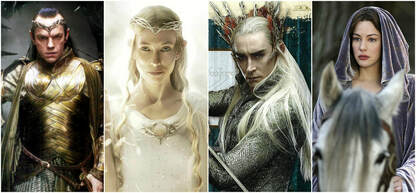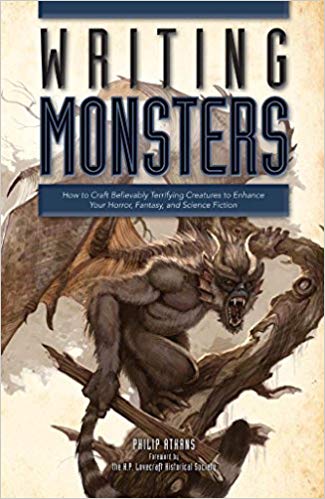 Greetings booknerds, as I near the end of my journey with The Monster of Selkirk, I think it’s about time I talk a bit more about my monsters, don’t you? Specifically why I made my monsters more of an obstacle rather than the series villain. In the land of Selkirk, the human denizens are tormented by feral elves. These elves are nothing like what you may be familiar with from things like Lord of the Rings—at least, not in their current form—as they are not regal or good, heck, they don’t even speak a language anyone can understand anymore! Instead they click at each other like insects, grow their nails out to talon-like length, file their teeth into razor sharp points, and have sickly, glowing yellow eyes. These are elves who like to kidnap children and eat the flesh of any human they catch. They are, in a word, monstrous. They weren’t always that way, however. They used to be more like the traditional elves we’re all used to—forest dwellers who worship tree deities with exceptionally long lives and agility, which made them fierce on the field of battle. They were beautiful and noble, but as the humans took more of their land they grew desperate for a way to stop them and save their trees. They sought help, but the help they received didn’t go as planned, and instead turned them into the beasts that have plagued the humans for three hundred years by the time the first book in the series starts.  So why did I pick elves to be my books’ monsters? And how did I decide what attributes to give them in order to make them beastly? First, I needed to research writing monsters in general to figure out what purpose my feral elves needed to fulfill. For instance, in things like the Walking Dead, the “monsters” (the zombies) are more of an obstacle. Sure they are gross and can be scary when they are in a herd, but they aren’t smart and the humans know how to deal with them. But using them as an obstacle means that it forces others to do evil things in order to survive. It makes for more complex villains as they can use these obstacles to their benefit against those they plan to victimize. Similar to Frankenstein’s monster. The creature wasn’t necessarily the bad guy, but using fear of this “other” creature allowed Shelley to show who the true bad guys were. Sure, there are more traditional monsters, smart and menacing who prey on the innocent like Stephen King’s “Cujo” or the original “Dracula” which work because it forces your stories heroes to outsmart them and find ways to destroy the thing trying to kill them first. But ultimately, what all monsters have in common is that these creatures are scary. Villains can be scary too, but what makes a monster is more of that primal fear they illicit in your characters. So, when I was crafting my monsters, I had to think first of what would be scary for my characters to interact with, what fears my characters had that these monsters could play off of, or I could embody within them. I had to ask myself: is my monster meant to be an obstacle that my other bad guys use or that stands in the way of my main characters goals? Yes, monsters can be villains obviously, but it was important for me to decide if my bad guy was going to embody something truly frightening, or if they were going to be everything my hero was not and therefore oppose the goals I had established for my main character to accomplish.  Once I established what role my monster elves needed to fulfill—an obstacle that served as a motivator—that’s when I started to have a lot of fun with monster building, because I knew exactly what I needed from these beasts and how that would impact my other characters. At this point in the creative process, I was asking myself questions like: what does my monster look like? Where do they come from? What makes them scary? What are their powers or abilities? Their weaknesses? Are they brand new creatures or based on an archetype? How does this monster fit into my story/what goal does the monster have? This is when in the process I actually settled on flipping elves into the bad guys, by the way. The creature based on an archetype bit, in case you want to know exactly when the magic happened. I also relied heavily on a great resource for crafting my monsters—and will continue to use for my books in the future as well--“Writing Monsters” by Philip Athans. This guide was instrumental when I decided that my feral elves were going to be the monsters that served as both a metaphor, were sources of pity, brought the worst out in people, were an obstacle, and were legitimately terrifying—both for my characters and, hopefully, you, the reader. There can be dozens of layers when crafting a truly remarkable monster that will stand out, and also pose all kinds of terrifying obstacles for characters to deal with. Monsters can be as rich as the main characters themselves, which leads to a more robust world, and a creature that is both well rounded, and believable even if they are completely made up. Monsters can be villains, but they can also be so much more than that if you want them to be! AND it leaves room to show what lengths your other villains will go to in order to harness the various monsters with which to oppose my main cast of characters. Which in turn led me to create multi-layered human bad guys. But more on that in July!
0 Comments
|
Archives
April 2023
|
 RSS Feed
RSS Feed